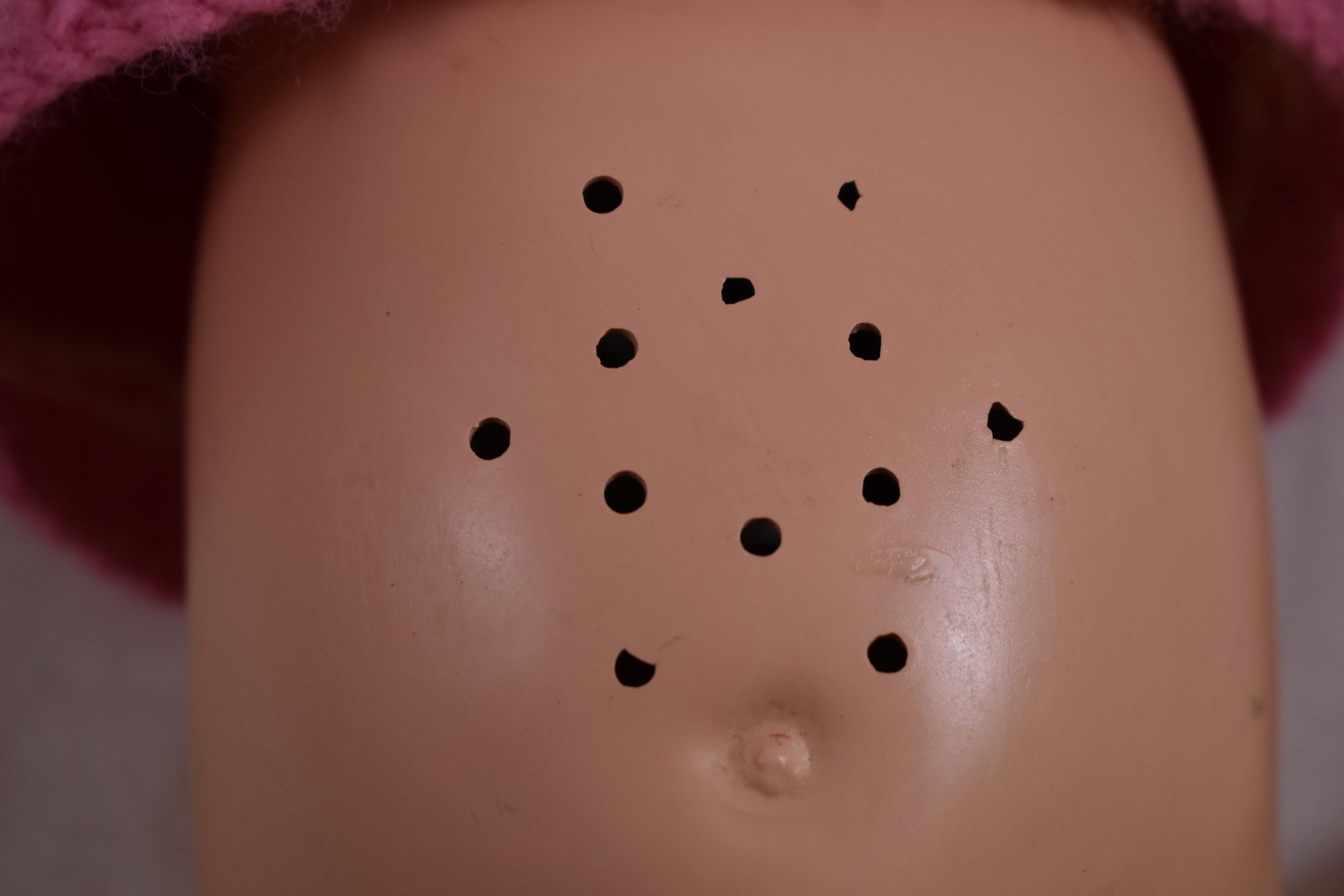The Uncanny Valley
What Does your Dolly Do?
Walking Dolls
Walking doll patents employed springs and elastics for hips and knees, and allowed for the dolls’ heads to move as they walked. The Alexander Doll Company introduced a pulley and lever system in 1939. Walking dolls of the 1960s and 1970s had stiff legs and arms. When one arm was raised it was possible to make the legs move awkwardly, one at a time.
Tiny Swingy wasn’t exactly a walker; she was a dancer from the swingin’ ‘60s, as her mod clothes suggest. She had a battery compartment in her back. She could turn her head, swing her arms and twist at the torso.
Tiny Swingy battery pack
Tiny Swingy battery pack
Peggy, the walking doll
Peggy's arm joint
Peggy's leg joint
Crying and Wetting Dolls
There have been dolls that make a crying sound, dolls that shed tears, and dolls that do both. Many older people will remember the popular doll Tiny Tears, made by the British company Palitoy in the mid 1960s. She could shed real tears via tubes connected to holes in the doll’s eyes. The wetting dolls worked in a similar way, and usually came with a baby bottle.
An early doll that made a crying noise did so by way of a small bellows that, when moved, pushed air across a reed to make a sound. This could be interpreted as talking or crying. An improvement on this was a small voice box that activated when tipped over. In the sixties and seventies the doll industry latched onto recording technology. Many a child remembers pulling the string at the back of their dolls neck to activate a recording, hoping that the next pull wouldn’t be the one to break the string. Now dolls can talk and cry electronically.
Doll collectors have noticed a “plastic doll disease’ caused by chemical reactions from decaying plastic dolls that cause dolls to weep brown, vinegary tears. Oddly, the “disease” is contagious, caused by acidic fumes that start to act on other nearby plastic dolls.
“Wettums” was made by the Reliable Toy Company and came complete with baby bottle. She drank and then wetted her diaper; a classic example of a role teaching doll. Wettums was produced between 1920 and 1940, and was re-introduced again in the 1940s, made from plastic and vinyl. She came in three sizes and advertising targeted “little mothers.” She is a composition doll. An interior rubber tube directed water from the mouth to the diaper. These dolls are often found in poor condition because water is very damaging to the composition materials, as can be seen from the close up image.
A Wettums doll
A close-up of water damage to Wettum's leg.
Wettum's arm. showing cracks in the composition material.
Below are three voice boxes from three different eras.
Countess Jutta’s squeaker, 1914
Peggy Walking Doll, pre– 1950
Buffy, circa 1970












